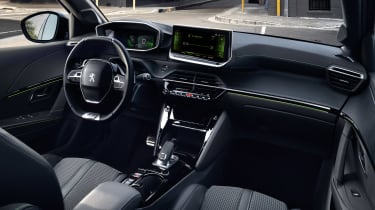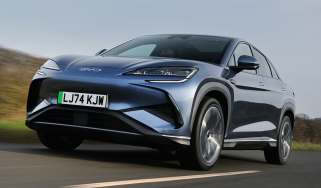All-new 2019 Peugeot 208: prices, specs and release date
The second-gen Peugeot 208 is available to order now for £16,250 with first deliveries starting in early 2020
The all-new Peugeot 208 can be ordered now with prices starting from £16,250. It will go on sale alongside the electric Peugeot e-208 with the first customer cars arriving in early 2020. The new 208 will go head-to-head with the Renault Clio, SEAT Ibiza and the all-conquering Ford Fiesta. It’s more expensive than all those models, however, so Peugeot will be hoping to win buyers over with the 208’s eye-catching new styling.
New 2019 Peugeot 208 prices and specs
Three trim levels are available for petrol and diesel cars, and they’re similar to the grades on the outgoing Peugeot 208 hatchback. Active is the first, offering alloy wheels, a head-up display, a touchscreen and automatic emergency braking. Mid-range Allure adds larger wheels, Peugeot’s 3D i-Cockpit software and LED rear lights, while top-spec GT Line offers parking sensors, a reversing camera, cyclist and pedestrian detection and LED headlights.
Best small cars and superminis 2019
The entry-level Active model starts at £16,250, which is about £1,300 more than the outgoing 208 and almost £2,000 more than the entry-level Renault Clio. The Allure model costs £18,850 before any options and the GT Line starts at £20,700. The electric Peugeot e-208 will start from £25,050 (after the £3,500 Government subsidy) in Active trim, rising to £29,650 in top-spec GT trim. Equipment on the EV is broadly similar to the petrol and diesel versions.
Engines and performance
Four engines will be available from launch, plus the electric model. The cheapest engine is the 74bhp 1.2-litre non-turbocharged petrol mated to a five-speed manual gearbox, which is only available on Active trim. Next up is a turbocharged version of the three-cylinder 1.2-litre, with a choice of 99 or 128bhp. An automatic gearbox is standard on the latter and optional on the former, with a six-speed manual fitted on the 99bhp engine as standard. A 1.5-litre four-cylinder BlueHDi with 99bhp is the diesel option and comes with a six-speed manual gearbox only.
The all-electric Peugeot e-208 uses a 100kW electric motor that produces 134bhp and is powered by a 50kWh battery. A range of 211 miles is confirmed, with three options for charging: 20+ hours using a standard three-pin plug, eight hours with a wallbox and an 80% charge in 30 minutes with a roadside 100kW rapid charger.
Peugeot 208 styling
The 208 has been given a new, sportier design in keeping with the larger Peugeot 508 that’s already on sale. New design features include a gloss black insert running across the rear of the car and dramatic LED lights at the front. The car looks particularly sporty in GT Line trim, showing wide wheel arches and a larger rear spoiler.
Notable additions to the electric e-208 model include a multi-coloured Peugeot lion badge and e-208-specific badging, along with a body-coloured grille.
Interior
Introduced for the new Peugeot 208 is the 3D i-Cockpit layout, which includes a digital dashboard that we haven’t seen yet in any another Peugeot model. It uses reflecting methods to create the illusion of 3D graphics. Piano black plastics are prominent around the cabin and a seven-inch floating touchscreen is fitted as standard. If this isn’t sufficient, higher spec trims such as GT Line get a 10-inch screen along with Apple CarPlay and Android Auto. Higher trim levels also offer bespoke interior detailing and grey Alcantara seats.
A MyPeugeot app will allow owners of the e-208 to manage the charging of the battery and the climate control remotely.
Boot space hasn’t been announced yet but the e-208 is expected to have the same as the conventionally powered models thanks to clever storage under the rear floor.
Read our Peugeot 208 prototype review, or see how the Peugeot e-208 compares to its rivals like the Renault ZOE.
Recommended

New Subaru Trailseeker revealed as rugged electric SUV with 375bhp

New Subaru Solterra brings more range, power and polish
Most Popular

Suzuki’s new 10-year warranty is free – here’s how to get it

Omoda E5 targets rivals: now with zero deposit and APR
Tips & advice

Car dashboard warning lights: what does each symbol mean?

Electric car charging stations: public networks, charger types, apps and maps












